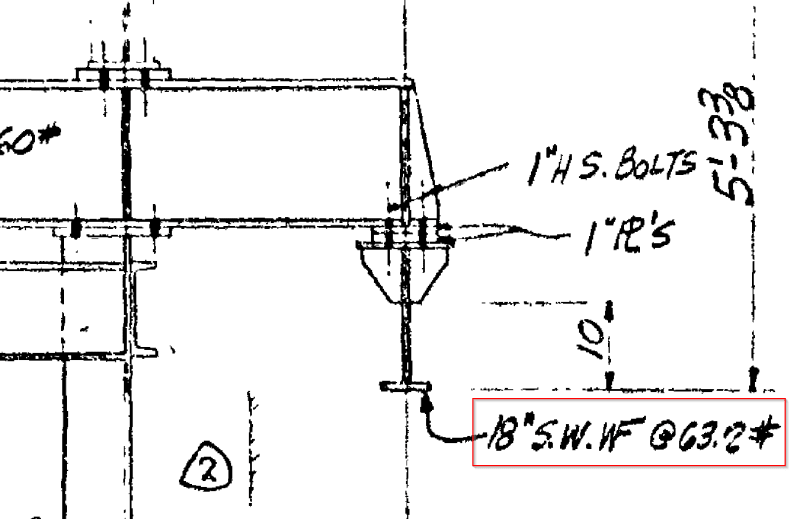Hi!
I have an old drawing from 1960 in which a beam is specified: 18" S.W.WF@63.2#. I have not found that beam in any chart. Does anyone know what this beam is?

I am almost sure it is custom built, but I don't understand why someone would have put the height and linear weight if it's a custom beam. If I were the designer I would have simply put the assembly drawing # of this beam.
Here is what I know of this beam so far:
- Composed of 3 welded plates
- Bottom flange is narrower and thicker than top plate
I have an old drawing from 1960 in which a beam is specified: 18" S.W.WF@63.2#. I have not found that beam in any chart. Does anyone know what this beam is?

I am almost sure it is custom built, but I don't understand why someone would have put the height and linear weight if it's a custom beam. If I were the designer I would have simply put the assembly drawing # of this beam.
Here is what I know of this beam so far:
- Composed of 3 welded plates
- Bottom flange is narrower and thicker than top plate
